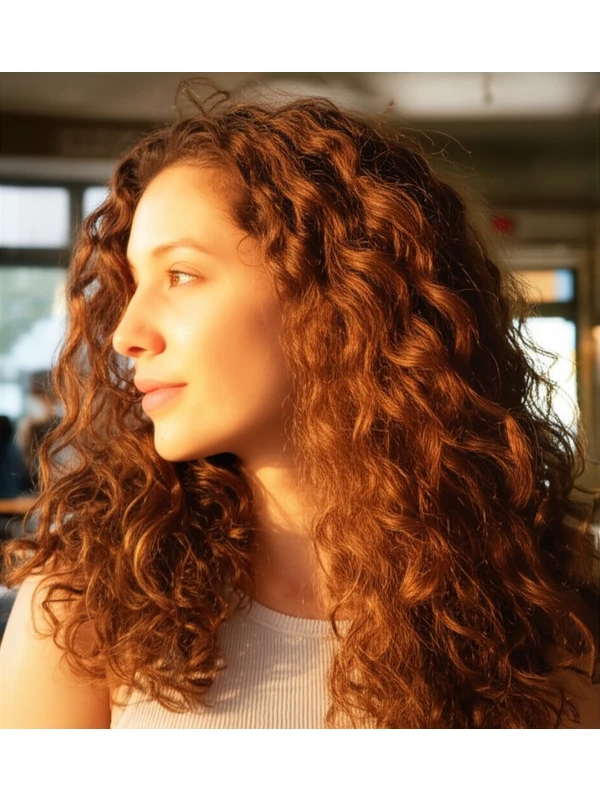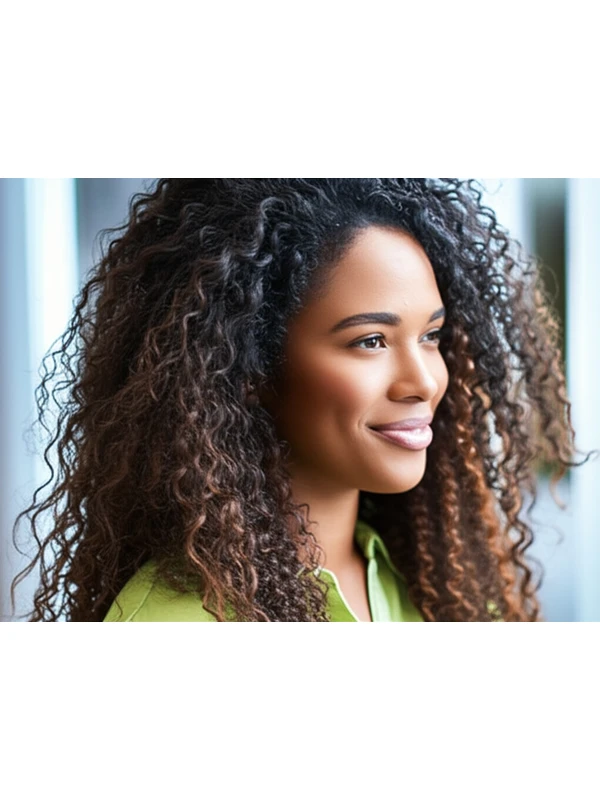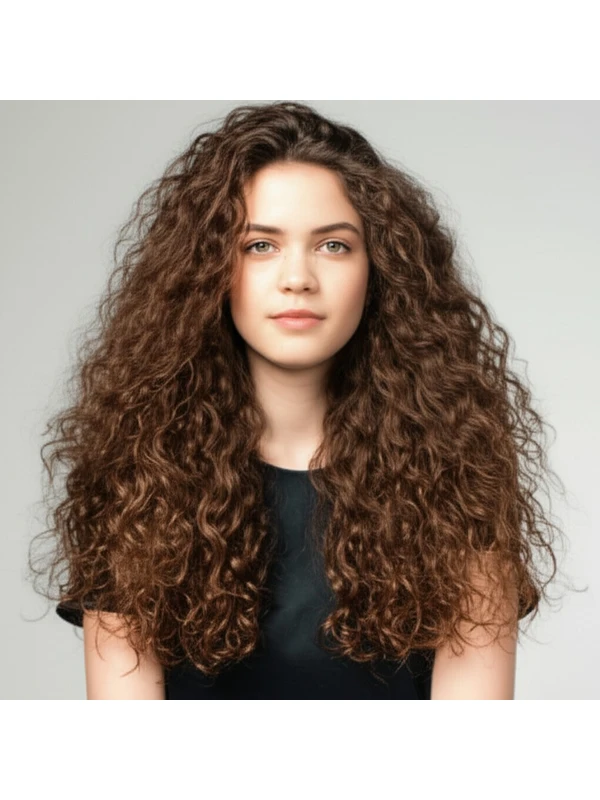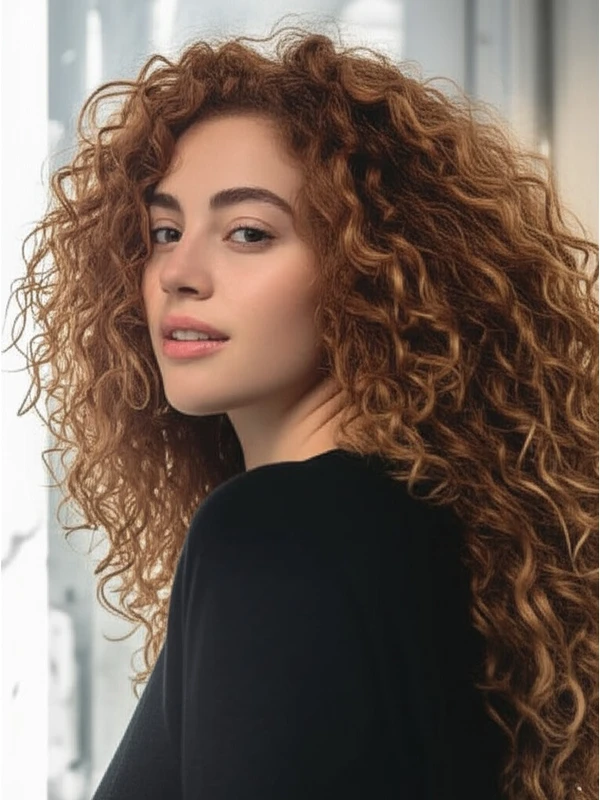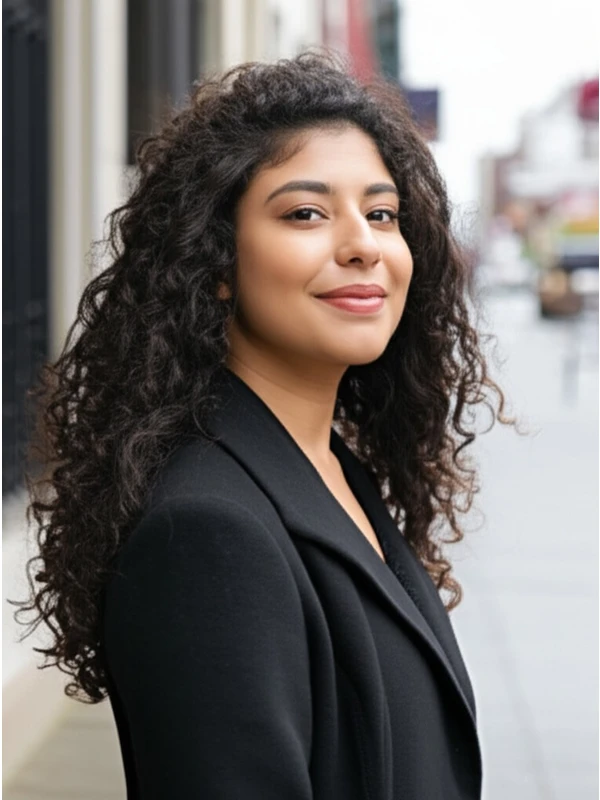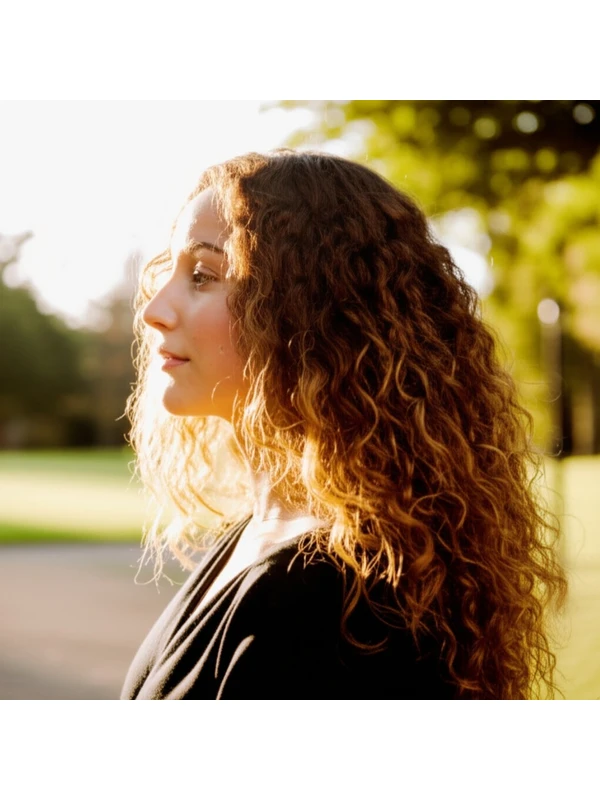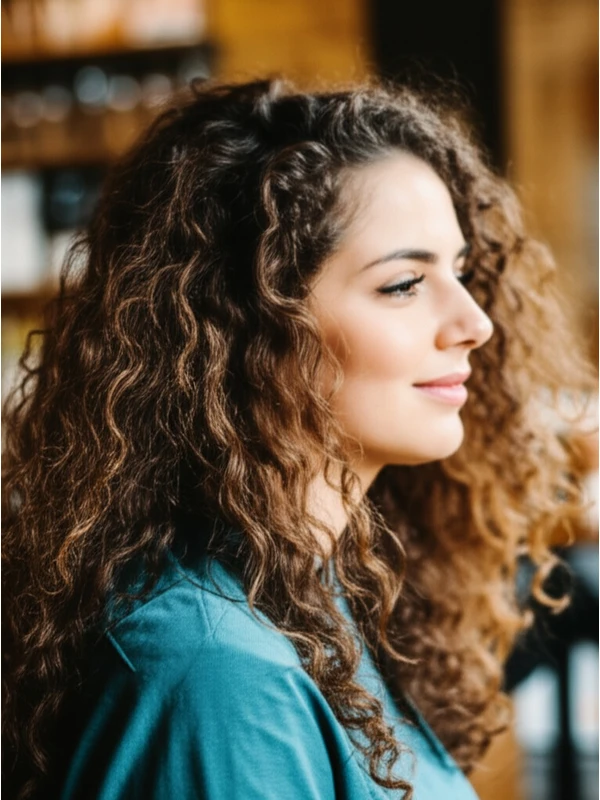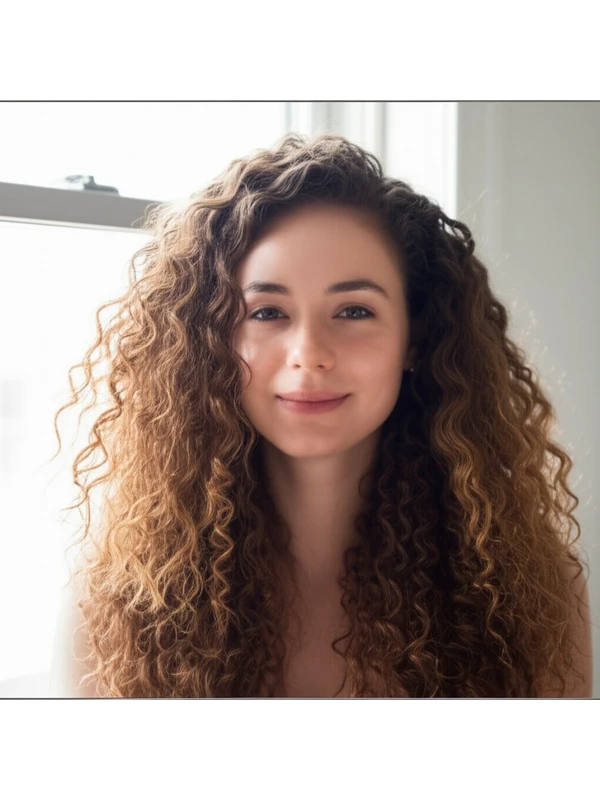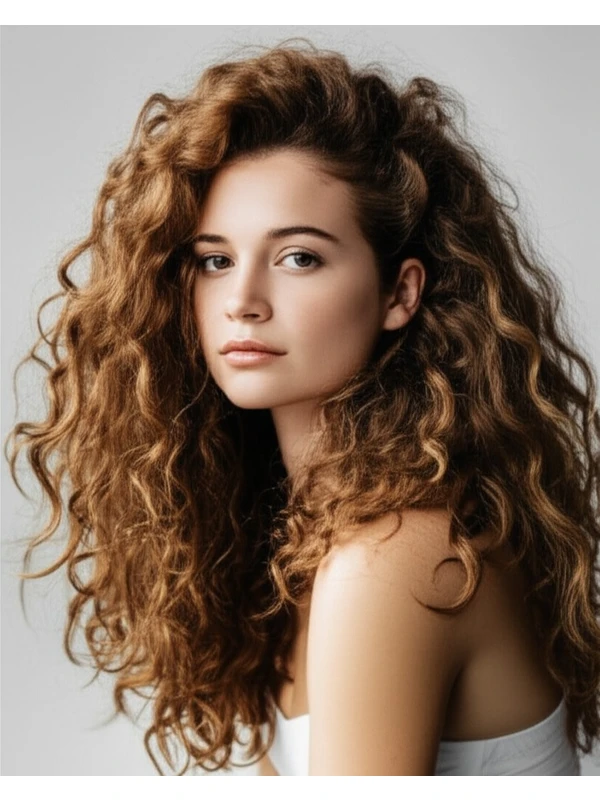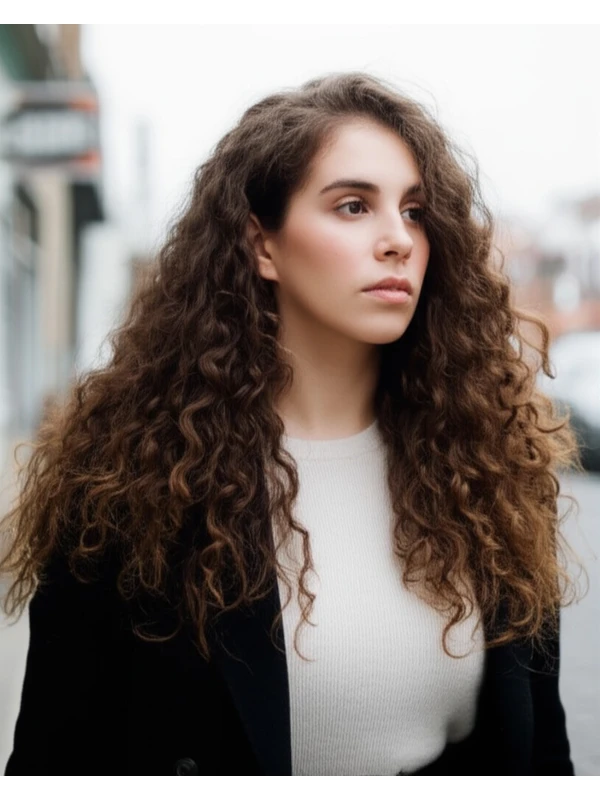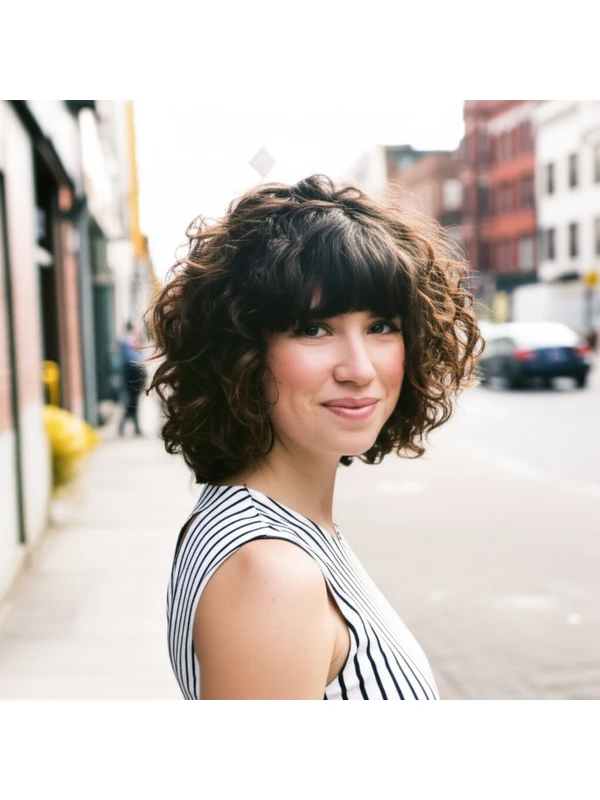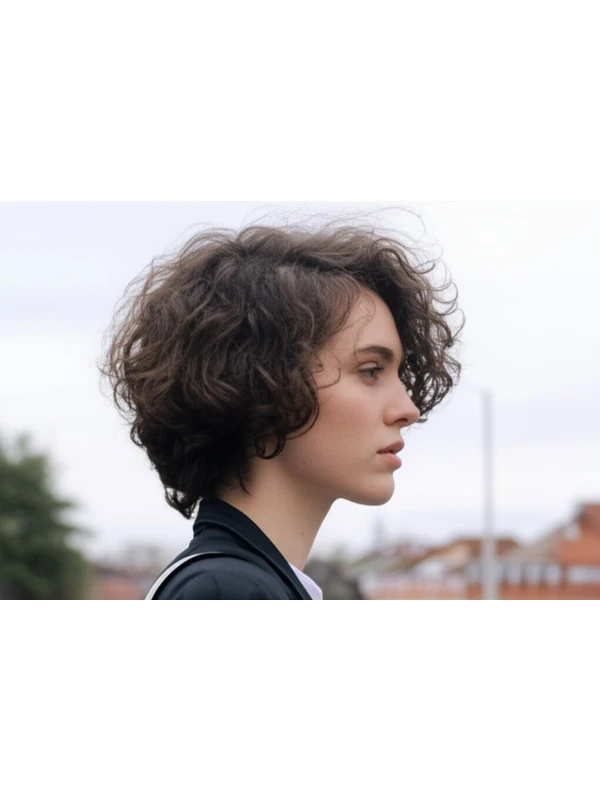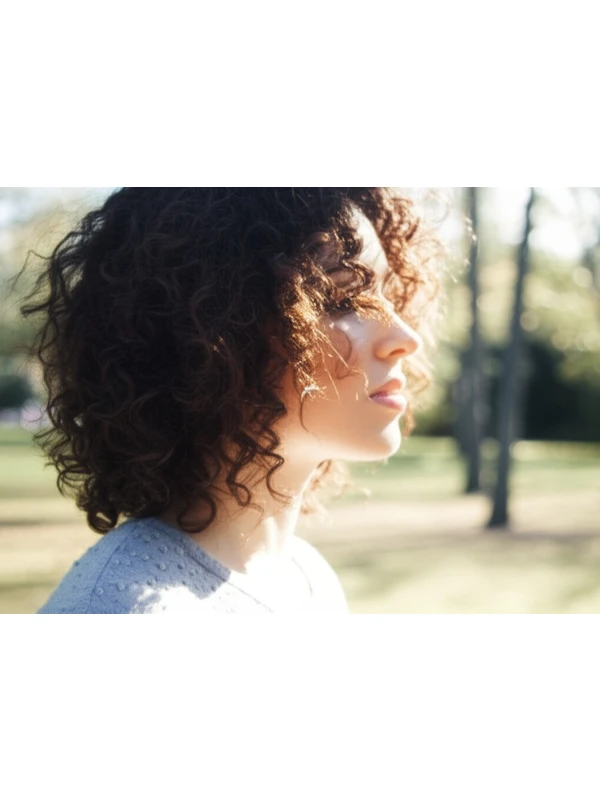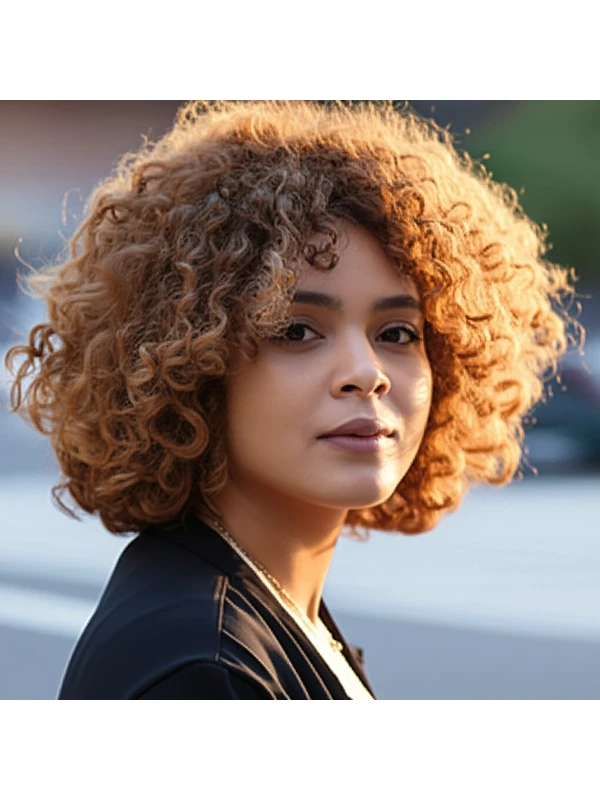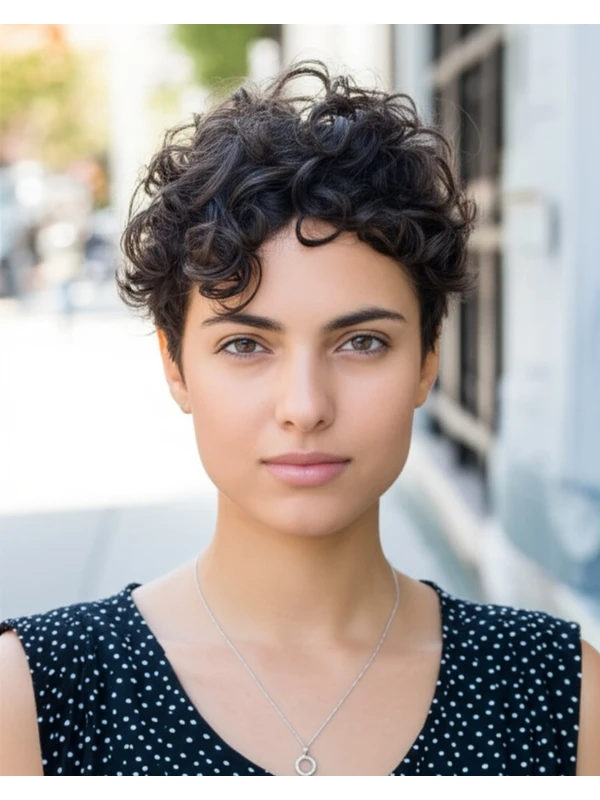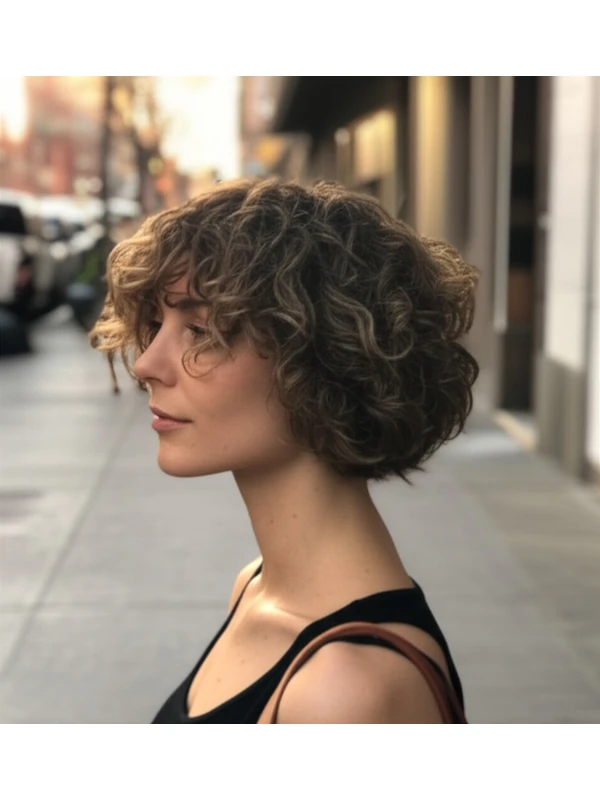#Long Curly Hair: A Comprehensive Style Guide
Long curly hair is a celebration of texture! It’s a look that can be incredibly flattering and expressive, but also requires understanding its nuances to truly thrive. This guide will break down everything you need to know about rocking long curls – from finding the right cut to mastering daily styling.
#1) Background & Definition: What Is Long Curly Hair?
The "long curly hair" style isn’t just about length; it's a specific haircut designed to enhance natural curl patterns. It typically refers to hair that falls past the shoulders, often reaching mid-back or longer. The key is layering strategically to prevent weight from dragging down curls and creating a triangular shape.
- Cut Geometry: The cut involves removing bulk through layers – these are sections of hair cut shorter than others. These layers start higher up (often around the crown) and gradually decrease in length towards the ends, allowing for volume at the roots and movement throughout. Face-framing pieces are common to soften features.
- Key Features: Bouncing curls, defined shape, natural volume, often a lighter feel than blunt long hair.
- Typical Length Ranges: Shoulder-length (collarbone) to mid-back or longer (past the bra strap).
- Alternative Names: Long layered curls, cascading curls, curly mane.
#2) Face Shape Fit: Finding Your Best Angle
Long curly hair can be incredibly flattering on many face shapes but strategic styling is key! Here's a breakdown:
- Oval: Lucky you! Almost any long curly style works well with an oval face shape. Play with layers and fringe to personalize the look.
- Fringe Options: Wispy bangs, curtain bangs, or no fringe – all are great choices.
- Round: Long curls add length and slim a round face. Avoid blunt cuts that can emphasize width. Layers around the cheekbones help create definition.
- Fringe Options: Side-swept bangs soften the face; avoid full, straight-across bangs which can make your face appear wider.
- Square: Soften strong jawlines with long layers and face-framing pieces that curve away from the face. Avoid harsh lines.
- Fringe Options: Curtain bangs or soft, angled fringe help soften angles.
- Heart: Long curls balance a wider forehead and pointed chin. Volume at the bottom of the cut adds fullness to the lower portion of your face.
- Fringe Options: Side-swept bangs are flattering; avoid very short, blunt fringes.
- Diamond: Similar to heart shapes, long curly hair softens diamond faces. Layers around the cheekbones and jawline create balance.
- Fringe Options: Curtain bangs or a softly textured fringe work well.
- Oblong (Long): Add width with layers that start higher up on the head and maintain volume throughout. Avoid styles that pull hair straight down, as this can elongate the face further.
- Fringe Options: A full fringe (if you’re brave!) or long, wispy bangs can help shorten an oblong face.
#3) Body Proportions & Height Guidance: Tailoring to Your Silhouette
Your height and body shape influence how a long curly style will look on you.
- Petite: Shorter lengths (shoulder-length to just past the collarbone) prevent overwhelming your frame. Avoid excessive volume at the crown.
- Average Height: Most length variations work well! Consider where you want to add or subtract visual height/volume.
- Tall: Long hair looks fantastic on taller individuals, allowing for maximum drama and movement.
- Narrow Shoulders: Layers that create width around the shoulders can balance a narrow frame. Avoid styles that are too flat at the sides.
- Broad Shoulders: Volume concentrated towards the crown draws attention upwards, minimizing the appearance of broad shoulders.
- Short Neck: Avoid excessive volume directly behind your head; opt for layers that soften the neckline and create length. A side part can also be more flattering than a center part.
- Long Neck: Fuller styles with more volume around the face balance out a longer neck.
#4) Works Best With Hair Types & Densities: Understanding Your Texture
This style is adaptable, but certain hair types and densities thrive best.
- Hair Types:
- Wavy (2A-2C): Long curly layers enhance definition and prevent the “triangle” shape common with wavy hair.
- Curly (3A-3C): This style is a classic choice, showcasing curl pattern beautifully.
- Coily (4A-4C): Long curls require careful layering to avoid shrinkage and maintain length. Moisture is essential.
- Hair Densities:
- Fine Hair: Layers are crucial for creating volume; otherwise hair can look stringy. Avoid too many layers, which can make fine hair appear even thinner.
- Medium Hair: The most versatile density – layers will add shape and movement without sacrificing fullness.
- Thick Hair: Significant layering is needed to remove weight and prevent a bulky appearance.
- Shrinkage: Curls and coils shrink. What looks long in the salon may appear much shorter when dry at home. Factor this into your desired length!
#5) Styling Variations: From Casual to Evening Glam
Long curly hair offers endless styling possibilities.
- Sleek vs. Textured: Use a smoothing serum for a polished, sleek look or embrace your natural texture with curl-enhancing products and air drying.
- Middle vs. Side Part: A middle part balances features; a side part adds asymmetry and volume to one side.
- Fringe Variations: Wispy, curtain, angled – experiment to find what suits your face shape best!
- Occasion Styling:
- Casual: Air dry with leave-in conditioner for effortless curls.
- Office: A sleeked-down look with a serum and gentle styling.
- Evening: Add accessories like clips or headbands; use a curl defining cream to enhance definition.
#6) Maintenance: Keeping Your Curls Happy & Healthy
- Trim Cadence: Every 8-12 weeks, depending on growth rate and how quickly you want to maintain shape.
- At-Home Routine: Gentle cleansing (sulfate-free shampoo), deep conditioning weekly, leave-in conditioner daily.
- Heat vs Air Dry: Minimize heat styling! When using heat, always use a protectant spray.
- Product Checklist:
- Shampoo & Conditioner (moisturizing)
- Leave-In Conditioner (essential for moisture!)
- Curl Defining Cream/Gel/Mousse (for hold and definition)
- Smoothing Serum (optional, for sleek styles)
- Estimated Daily Styling Time: 15-45 minutes depending on desired style and drying method.
#7) Grow-Out Roadmap: Evolving Your Look
- Months 1-3: The cut will maintain its shape well. Regular trims are important to prevent split ends.
- Months 3-6: Layers may start to blend together, potentially losing some definition. A trim can refresh the layers and re-establish shape. Consider adding face framing pieces if desired.
- Maintaining Shape: Focus on moisturizing and defining curls regularly to keep them healthy and bouncy between cuts.
#8) Color Pairings: Enhancing Your Curls’ Beauty
- Warm Undertones (golden, yellow): Honey blonde highlights, copper tones, caramel lowlights.
- Cool Undertones (pink, blue): Ash brown, cool-toned beige highlights, silver/gray accents.
- Low-Commitment Options: Balayage or babylights add dimension without a harsh root line and grow out more seamlessly.
#9) Season & Occasion Guide: Styling for Every Moment
- Spring/Summer: Lighter layers, airy styling with minimal product to combat humidity. Braids and updos are great options.
- Fall/Winter: Deeper tones, richer textures achieved with curl creams and oils for added moisture and definition.
- Work: Polished, controlled curls – consider a sleeked-down look or a low ponytail.
- Weddings/Parties: Embrace volume! Experiment with updos that showcase your length and texture.
- Formal Events: Consider adding extensions for extra length and drama.
#10) Cost & Time: What to Expect at the Salon
- Salon Time: 2-4 hours, depending on hair density, desired style complexity, and color services.
- Price Range: Expect a higher price point than shorter styles due to the time involved – typically in the upper end of your salon’s pricing tier.
#11) Pros & Cons: Weighing Your Options
Pros:
- Beautifully showcases natural curl pattern.
- Versatile styling options for various occasions.
- Can be very flattering on many face shapes.
- Creates a sense of drama and movement.
Cons:
- Requires regular trims to maintain shape.
- Styling can be time-consuming, especially when air drying.
- Requires significant product investment.
#12) Salon Consultation Script: Questions to Ask & Prepare For
Here are some prompts you can use during your consultation:
- "I love the look of long curly hair, but I'm concerned about it looking too bulky/flat."
- "Can we discuss how layering will affect my curl pattern and shrinkage?"
- “What products do you recommend for maintaining this style at home?”
- "I’d like to incorporate face-framing pieces – can we explore different fringe options?"
- "How often should I plan on coming back for trims to maintain the shape?"
FAQs: Your Burning Questions Answered
- Can I do this style with fine hair? Yes, but layering is crucial! Ask your stylist to use a razor cut technique to remove weight without thinning too much.
- How can I prevent my long curly hair from getting tangled? Detangle regularly (ideally when wet) using a wide-tooth comb or detangling brush with plenty of conditioner.
- What's the best way to sleep with long curly hair? Use a silk pillowcase or bonnet to reduce friction and frizz.
- Will this style make my hair look shorter than it is due to shrinkage? Yes, curls and coils shrink! Discuss your desired length with your stylist beforehand.
- Can I dye my long curly hair without damaging it? It’s possible but requires extra care. Deep conditioning treatments are essential before and after coloring. Consider a gloss for added shine and color vibrancy.
- How do I avoid the dreaded "triangle head" shape with long curls? Strategic layering is key! Your stylist should focus on removing weight from the crown while maintaining volume at the ends.
